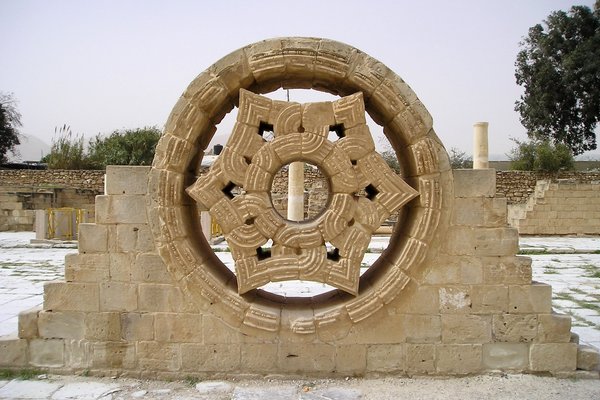Palestine
Hisham's Palace/ Khirbet al-Mafjar
Hisham's Palace comprises the remains of an Umayyad desert castle. The complex held a palace, a thermal bath, mosque and monumental fountain. It has mosaic floors, notably at the bath house and the floor of the audience hall.
Site Info
Official Information
- Full Name
- Hisham’s Palace/ Khirbet al-Mafjar (ID: 6546)
- Country
- Palestine
- Status
-
Nominated 2026
Site history
History of Hisham's Palace/ Khirbet al-Mafjar
- 2025: Postponed
- No evaluation mission due to security situation
- 2021: Revision
- Partly successor to "Jericho Millenary City, Archaeological and Historical Urban Development (2020)", where this was one of the locations.
- 2021: Added to Tentative List
- Added to tentative list
- Type
- Cultural
- Criteria
Links
- UNESCO
- whc.unesco.org
All Links
UNESCO.org
- whc.unesco.org — whc.unesco.org
Community Information
- Community Category
- Archaeological site: Near Eastern
- Human activity: Agriculture
Travel Information
Recent Connections
News
No news.
Community Reviews
Show full reviews
The Umayyad dynasty was the 2nd Islamic dynasty, ruling from 661 to 750 AD. The dynasty was centred in Damascus, Syria, rather than Arabia. The Umayyad caliphs expanded their power throughout the Middle East, North Africa, and parts of Europe and Asia, becoming one of the most significant empires of their time. Hisham (724 to 743 AD) was one of the last Umayyad caliphs, and his reign saw the commissioning of some of the most impressive examples of Umayyad art and engineering, including Hisham's Palace in Jericho.
Hisham's Palace in Jericho is believed to have been a winter residence and features intricate mosaics, sophisticated hydraulic systems, and decorative frescoes. The palace was rediscovered by archaeologists in the early 20th century and has since undergone restoration, providing valuable insights into Umayyad culture. Today, the palace is open to visitors who can explore the ruins and appreciate the grandeur of Umayyad art and architecture.
One of the most remarkable features of Hisham's Palace is the "Tree of Life" mosaic, which is a symbol of spiritual growth and a testament to the cultural legacy of the Umayyad empire. The mosaic depicts a large tree with blooming flowers and birds perched on its branches, creating a stunning display of color and pattern. The other notable structure is a large stone rosette with a circular carving and intricate geometric and floral motifs. It is believed to be an authentic Umayyad-era element and is considered a significant example of Islamic art and architecture, symbolizing …
Keep reading 0 comments
